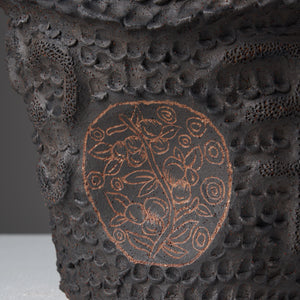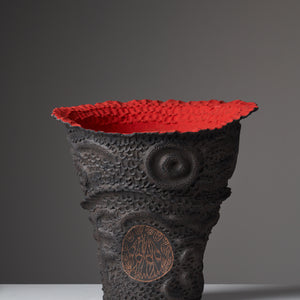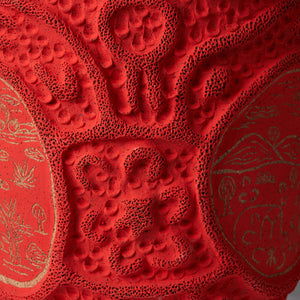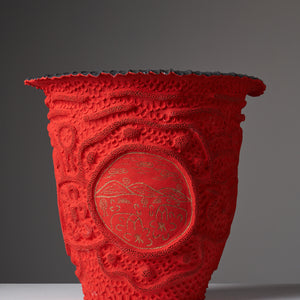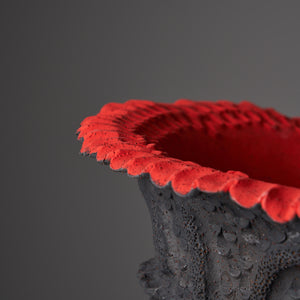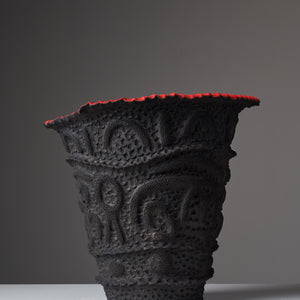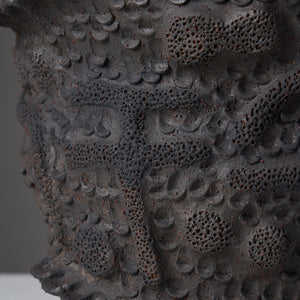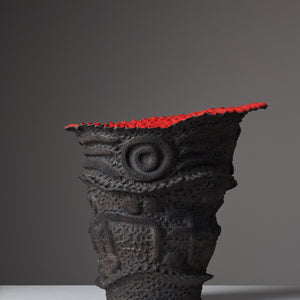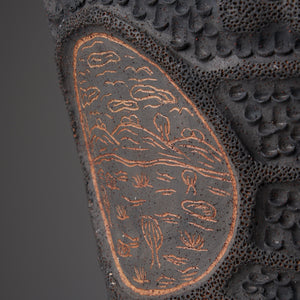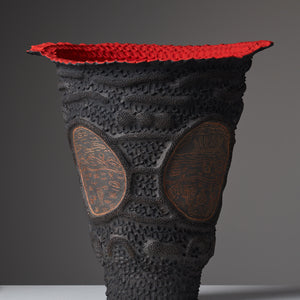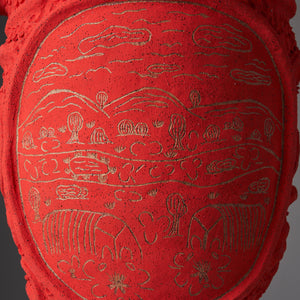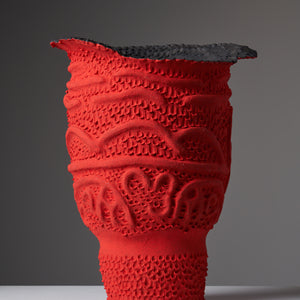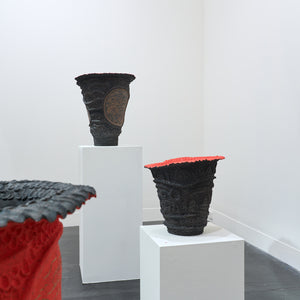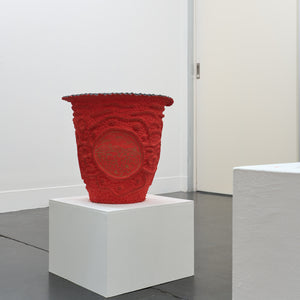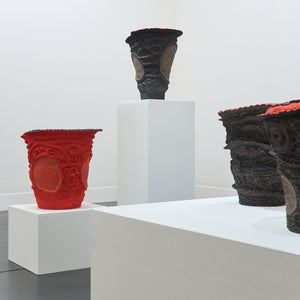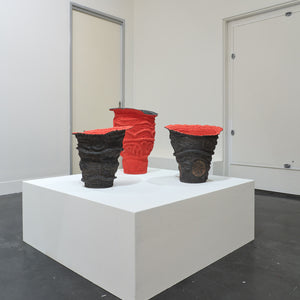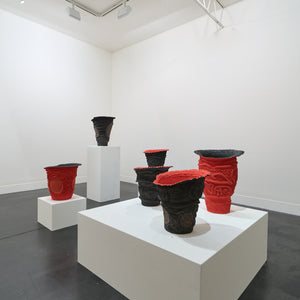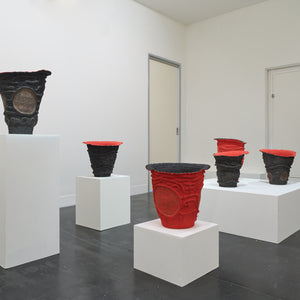MARALINGA - NGAYUKU WALYTJAKU TJUKURPA (MY FAMILY’S STORY)
25 September - 25 October 2025
Exhibition Essay
The effects of the British nuclear tests conducted at Maralinga during the 1950s and 60s are long-lasting, especially for the Anangu people living in the APY Lands of remote South Australia. Josina Pumani is a contemporary South Australian artist working in ceramics and painting, whose work is deeply informed by this dark chapter in our history. Through hand-built forms, she tells the story of Maralinga and continues her family’s tradition of advocating for Anangu in response to the nuclear testing.
“Maralinga hurt our lands and people and our story needs to be told,” says Pumani. “We think about it all the time. Why did this happen to us?”
Born and raised in Mimili, a remote Aboriginal community in the APY Lands, Pumani now lives in Adelaide, where she works from the APY Art Centre Collective’s Adelaide studio. Her mother, the late Ngupulya Pumani and her grandmother Kunmanara (Milatjari) Pumani, were two of the founders of Mimili Maku Arts. Pumani has been greatly influenced by the strong women in her family, learning about leadership and a deep connection to country.
Growing up, Pumani listened to her family's stories about the impact of the Maralinga bombings, which destroyed many lives, lands, and livelihoods. Her uncle, Yami Lester, was blinded by the bombings, and many others suffered both physically and emotionally. Already an established painter, Pumani decided to explore ceramics, using the stories she had heard from her family as inspiration.
Pumani believes it’s important to continue to tell the story of Maralinga and bring it back into the national consciousness. The testing, which covered and area of 3,300 square kilometres, has had a lasting impact of the land and the people who living there, largely due to the acquiescence of the Australian Government. Pumani’s ceramic pots embody these stories, and using a unique technique she creates pieces that are rich with texture and detail.
Pumani’s powerful ceramic vessels represent the black plume of smoke containing radioactive particles which is synonymous with the bombs. The vibrant red represents the fires caused by the bombs and the black or grey symbolises the smoke. The exterior of the pots features markings that represent the Anangu people gathering in shelters, the land before the bombing along with imagery of the bombs, smoke, and the devastated terrain. The large vessels are deeply connected to the land through the material itself and through Pumani’s process of creation.
Written by Jane Llewellyn
‘Maralinga | Ngayuku Walytjaku Tjukurpa (My Family’s Story)’ is presented as part of the 2025 Tarnanthi Festival. Tarnanthi is presented by the Art Gallery of South Australia.

